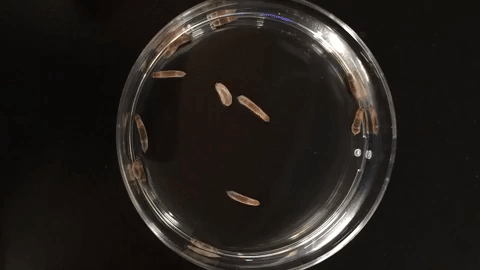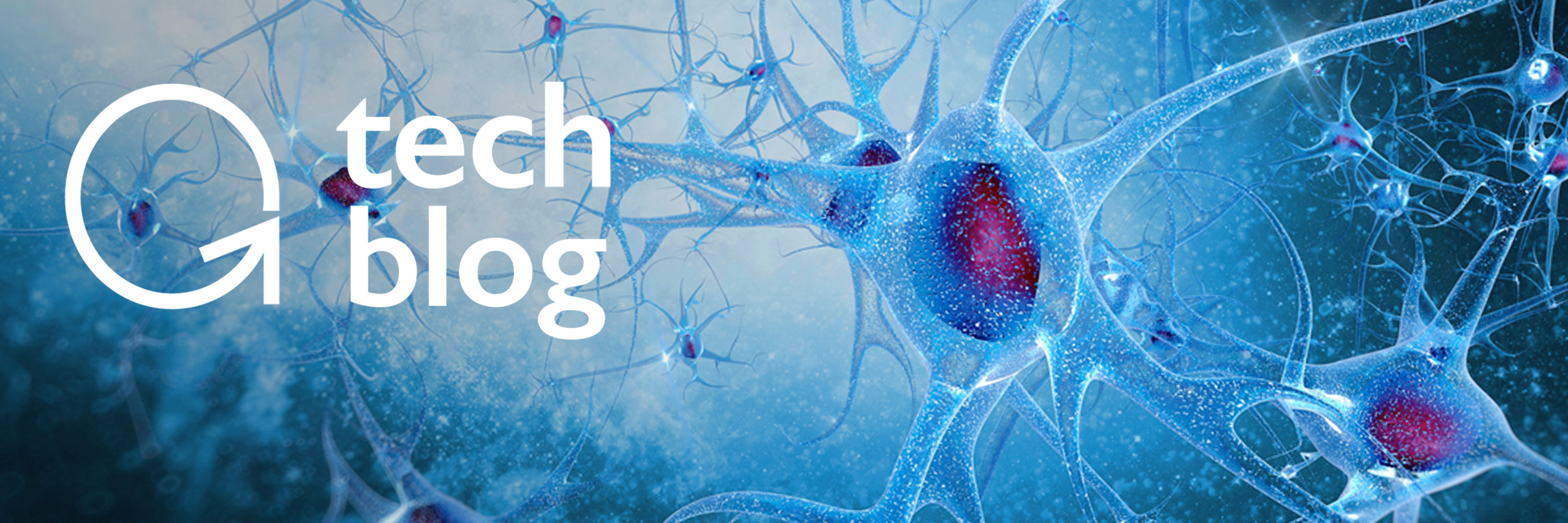
|
In this week's Abundance Insider: NVIDIA's latest AI artist, Google's all-neural mobile speech recognizer, and a glimpse into Tokyo's tech for the 2020 Olympics. Cheers, P.S. Send any tips to our team by clicking here, and send your friends and family to this link to subscribe to Abundance Insider. P.P.S. Join Peter Diamandis in Dubai, the City of the Future, for the inaugural Abundance 360 Dubai Summit on March 26 - 27, 2019. Hosted by the Dubai Future Foundation and the Crown Prince of Dubai, this two-day experience offers exponential leaders an immersive look into how technology will transform every industry. Read more about the program and apply here to join. Harvard Study Unlocks A Key To Regeneration
What it is: A Harvard research team has achieved a major step in understanding how animals like lizards, worms, and jellyfish regenerate body parts. A few noteworthy results have come out of their investigation into how three-banded panther worms regenerate their entire bodies. The researchers found a “master control gene” called early growth response (EGR), which triggers changes in a complex system of 18,000 other genes during the regeneration process. Without the EGR gene turned ‘on,’ none of the other processes can happen. Humans express the EGR gene, too, and researchers know exactly how to control it. But the human version of EGR does not have the same switching effect that causes regeneration. Along with the fact that only 2 percent of our genome actively generates proteins, this study shows that the result of a specific genome depends on not only the code of the genome, but how that code is connected together. Why it's important: Since the first human genome was sequenced at the start of the millennium, geneticists and biologists have made exponential progress in understanding how our genetic code operates. As we increase our genetic understanding of how other species regenerate, we’ll gradually extrapolate what we find into human-facing products. From stem cells to bioprinting to genetic engineering, regenerative medicine will be transformative in the decades to come. | Share on Facebook Spotted by Todd Sheerin / Written by Max Goldberg Nvidia AI Turns Sketches Into Photorealistic Landscapes In Seconds
What it is: Earlier this week, NVIDIA revealed GauGAN, an early prototype of what TechCrunch hails the “MS Paint for the AI age.” Using a generative adversarial network (GAN) trained on 1 million Flickr images, GauGAN can create photorealistic images from just a few lines drawn by a user. As an example, a user could click on “tree,” draw a line, and GauGAN will create an image of a tree trunk. GauGAN can do the same for the sky, sea, rock, hills, wood, and other objects. NVIDIA built the software on its Tensor-based RDX Titan GPU platform to facilitate near-real-time results, but Bryan Catanzaro, VP of Applied Deep Learning Research, thought the platform could also run on standard CPUs with a slightly longer delay. While NVIDIA hasn’t announced plans for a commercial version, it will likely release a free trial version to facilitate public experimentation. Why it's important: As we discuss here in Abundance Insider, systems like GauGAN are rapidly democratizing the skills and hardware needed to interface with powerful AI. While a challenge remains in ensuring that these systems are trained on the right data sets, we’re approaching a time when deploying powerful Artificial Intelligence models will be as easy as launching a new blog or website. How will you begin to use this capability to drive experimentation within your business? | Share on Facebook Spotted by Marissa Brassfield / Written by Jason Goodwin Ikea Is Making Furniture Better For People With Disabilities — With The Help Of 3-D Printers
What it is: Launching its new ThisAbles project, IKEA has joined forces with nonprofits Access Israel and Milbat to create a line of products that makes furniture accessible to populations with special needs and disabilities. Aiming to make mainstream furniture accessible to all, the joint enterprise has not only identified over 130 products already suited to accommodate users with a range of disabilities, but has designed numerous low-tech add-ons. Think: oversized lamp switches, accessible handles for shower curtains and drawers, or customized hooks and couch legs. Yet while these hacks are only displayed in Israeli IKEA stores, users can now download free blueprint models anywhere in the world to 3D-print add-ons independently and on-demand. Why it's important: By pairing customized add-ons and 3D printing technology, we can transform almost any mainstream product into one that accommodates the unique needs of users with a range of disabilities. While retailers could design creative hacks in-house, publicly released 3D blueprints would democratize products for any customer, multiplying the range of everyday goods usable by people with disabilities. And just as customers can request tweaks to IKEA’s add-ons, firms might even crowdsource design ideas and feedback, honing product solutions for specific use cases and consumer needs. | Share on Facebook Spotted by Marissa Brassfield / Written by Claire Adair Robot Assistants From Toyota And Panasonic Prep For The Tokyo Olympics
What it is: Against the backdrop of the Tokyo 2020 Olympics, tech giants including Toyota and Panasonic are working with the organizing committee to showcase a variety of exponential technologies, namely robotics. Toyota will use around 16 autonomous Human Support Robots and 10 Delivery Service Robots to assist spectators with directions, grabbing objects from the floor, or in delivering food. Panasonic plans to showcase about 20 of its power assist exoskeletons to help visitors with luggage and similar lifting tasks. Robotics firm ZMP is hard at work to deploy an autonomous taxi fleet to ferry athletes and spectators around the city. Finally, on the renewables front, NTT has nearly completed an effort to create all of the athletes’ medals from recycled e-waste. Further pilot projects in solar roads and parking lots are underway to help Tokyo meet its goal of powering the Games entirely from renewable sources. Why it's important: Often, the exponential technologies we need to create abundance are already here but not evenly distributed. Similar to how XPRIZE structures its incentive challenges, this public-private effort from Japan reminds us that sometimes the only thing we are missing is the right catalyst and compelling occasion to overcome initial hurdles. | Share on Facebook Spotted by Marissa Brassfield / Written by Jason Goodwin Google AI Blog: An All-Neural On-Device Speech Recognizer
What it is: Google has just announced the roll-out of a novel breakthrough in speech recognition: it's all-neural, on-device recognizer that will power speech input in Gboard. In a new feat for AI technology, the recognizer’s ML model is trained using RNN transducer (RNN-T). This technology works by continuously processing input samples (voice speech), and outputs symbols as you speak — in this case, characters of the alphabet. The real leap, however, has to do with the storage size required by Google's algorithms. While previous cloud-based speech processing took up 2GB of storage, Google has successfully shrunk its speech algorithm storage demands down to 80MB, rendering its recognizer small enough to fit on your smartphone, and work offline. Why it's important: In the past, speech recognition programs would have to record inputs, send a request from your device to a remote server, and then wait for a response to translate your sentences into text. Aside from the delays that result from cloud-based processing, this meant that speech algorithms could only allow you to type with your voice while online. By decimating storage requirements, however, Google has now eliminated the burdens of network latency and unreliable service, as its RNN-T recognizer outputs words the second you utter them. | Share on Facebook Spotted by Aaron Levin / Written by Claire Adair Stanford Medicine Announces Results Of Unprecedented Apple Heart Study
What it is: Researchers at Stanford Medicine recently revealed the results of a U.S. study of over 400,000 people in all 50 states to evaluate the Apple Watch’s ability to detect atrial fibrillation (AFib). Conducted in partnership with Apple, the eight-month study is the largest of its kind to ever be performed. The results: 0.5 percent of patients received notifications that something might be wrong, and 84 percent of these patients were in AFib at the time of the notification. Why it's important: As Peter discussed in his Longevity & Vitality blog series, sensor and data abundance are transforming healthcare and medicine. The Apple Watch is Apple’s foray into the world-changing trend of mobile-as-a-medical-service. This study affirms the impact of wearables. For the first time in human history, we can detect early warning signs far before medical issues become deadly; as we live longer, how will you use your added health span to create an exponential impact? Share on Facebook Spotted by Max Goldberg / Written by Max Goldberg What is Abundance Insider? This email is a briefing of the week's most compelling, abundance-enabling tech developments, curated by Marissa Brassfield in preparation for Abundance 360. Read more about A360 below. Want more conversations like this?At Abundance 360, Peter's 360-person executive mastermind, we teach the metatrends, implications and unfair advantages for entrepreneurs enabled by breakthroughs like those featured above. We're looking for CEOs and entrepreneurs who want to change the world. The program is highly selective. If you'd like to be considered, apply here. Abundance Digital is Peter’s online educational portal and community of abundance-minded entrepreneurs. You’ll find weekly video updates from Peter, a curated newsfeed of exponential news, and a place to share your bold ideas. Click here to learn more and sign up. Know someone who would benefit from getting Abundance Insider? Send them to this link to sign up. |
Topics: Abundance Insider Robotics AI Artificial Intellegence healthcare biotech voice assistants Genetics regenerative medicine voice












